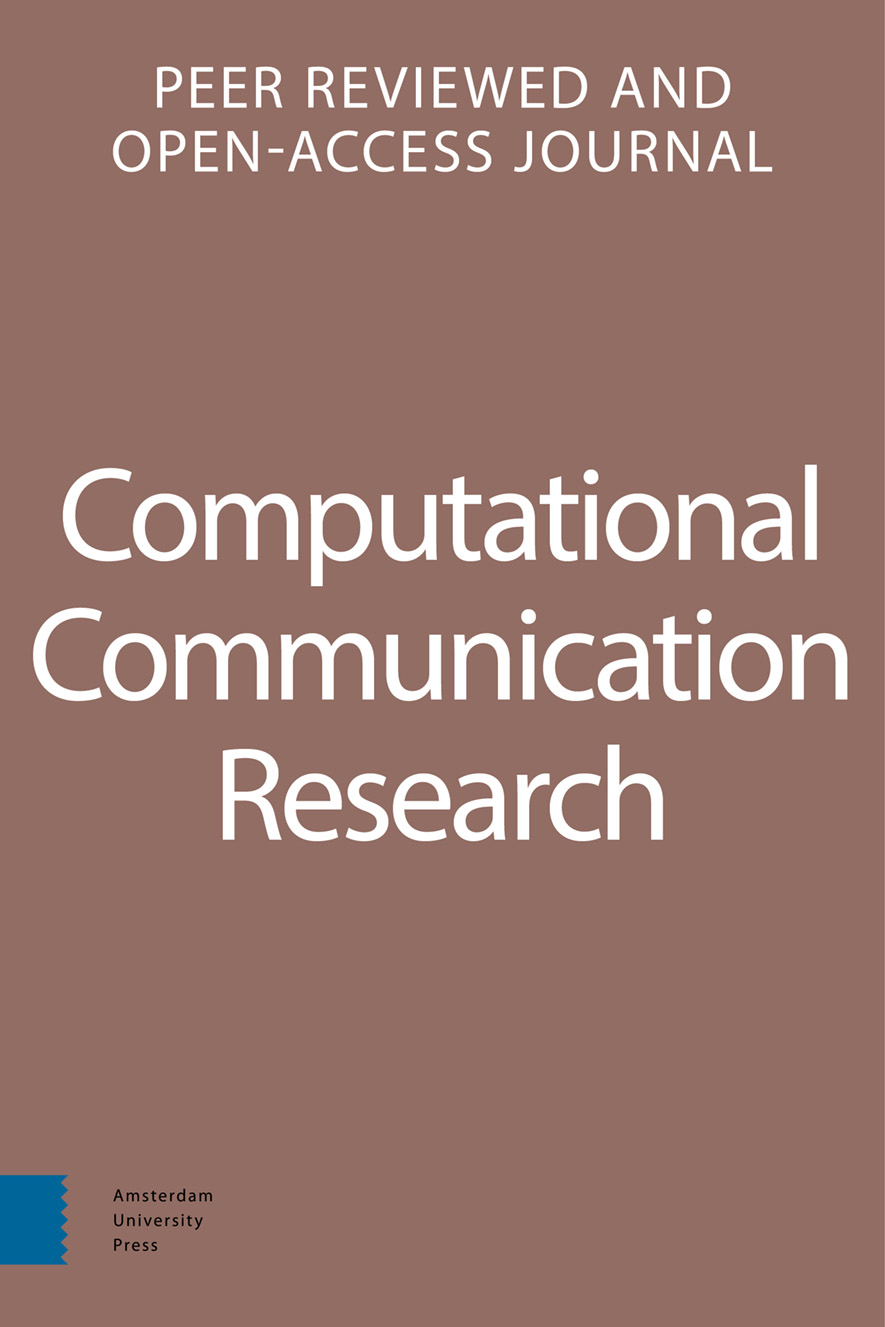- Home
- A-Z Publications
- Computational Communication Research
- Previous Issues
- Volume 4, Issue 2, 2022
Computational Communication Research - Volume 4, Issue 2, 2022
Volume 4, Issue 2, 2022
Language:
English
-
-
oa OSD2F: An Open-Source Data Donation Framework
More LessAbstract The digital traces that people leave through their use of various online platforms provide tremendous opportunities for studying human behavior. However, the collection of these data is hampered by legal, ethical, and technical challenges. We present a framework and tool for collecting these data through a data donation platform where consenting participants can securely submit their digital traces. This appr Read More
-
-
-
oa A framework for privacy preserving digital trace data collection through data donation
More LessAuthors: Laura Boeschoten, Jef Ausloos, Judith E. Möller, Theo Araujo & Daniel L. OberskiAbstract A potentially powerful method of social-scientific data collection and investigation has been created by an unexpected institution: the law. Article 15 of the EU’s 2018 General Data Protection Regulation (GDPR) mandates that individuals have electronic access to a copy of their personal data, and all major digital platforms now comply with this law by providing users with “data download packages” (DDPs). Through volunt Read More
-
-
-
oa The Sentiment is in the Details
More LessAbstract Determining the sentiment in the individual sentences of a newspaper article in an automated fashion is a major challenge. Manually created sentiment dictionaries often fail to meet the required standards. And while computer-generated dictionaries show promise, they are often limited by the availability of suitable linguistic resources. I propose and test a novel, language-agnostic and resource-efficient way of con Read More
-
-
-
oa Fifteen Seconds of Fame: TikTok and the Supply Side of Social Video
More LessAuthors: Benjamin Guinaudeau, Kevin Munger & Fabio VottaAbstract TikTok has rapidly developed from a punchline for jokes about “kids these days” into a formidable force in American politics. The speed of this development is unprecedented, even in the rapidly-changing world of digital politics. Through a combination of hashtag and snowball sampling, we identify 11,546 TikTok accounts who primarily post about politics, allowing us to analyze trends in the posting, viewing and commenti Read More
-
-
-
oa Talking politics: Building and validating data-driven lexica to measure political discussion quality
More LessBy Kokil JaidkaAbstract Social media data offers computational social scientists the opportunity to understand how ordinary citizens engage in political activities, such as expressing their ideological stances and engaging in policy discussions. This study curates and develops discussion quality lexica from the Corpus for the Linguistic Analysis of Political Talk ONline (CLAPTON). Supervised machine learning classifiers to characterize political talk Read More
-
-
-
oa Beyond Counting Words
More LessAuthors: Anne C. Kroon, Toni van der Meer & Rens VliegenthartAbstract Topics and frames are at the heart of various theories in communication science and other social sciences, making their measurement of key interest to many scholars. The current study compares and contrasts two main deductive computational approaches to measure policy topics and frames: Dictionary (lexicon) based identification, and supervised machine learning. Additionally, we introduce domain-specific word Read More
-
-
-
oa The 4CAT Capture and Analysis Toolkit: A Modular Tool for Transparent and Traceable Social Media Research
More LessAuthors: Stijn Peeters & Sal HagenAbstract This paper introduces the 4CAT Capture and Analysis Toolkit (4CAT), an open-source Web-based research tool. 4CAT can capture data from a variety of online sources (including Twitter, Telegram, Reddit, 4chan, 8kun, BitChute, Douban and Parler) and analyze them through analytical processors. 4CAT seeks to make robust data capture and analysis available to researchers not familiar with computer progra Read More
-
-
-
oa Do I sound American?
More LessAuthors: Jiyoun Suk, Josephine Lukito, Min-Hsin Su, Sang Jung Kim, Chau Tong, Zhongkai Sun & Prathusha SarmaAbstract Ongoing research into how states coordinate foreign disinformation campaign has raised concerns over social media’s influence on democracies. One example is the spread of Russian disinformation in the 2016 US presidential election. Russia’s Internet Research Agency (IRA) Twitter accounts have been known to deliver messages with strategic attempts and political goals. We use publicly available IRA Twitter d Read More
-
Most Read This Month
Article
content/journals/26659085
Journal
10
5
false
en

Most Cited Most Cited RSS feed
-
-
oa Computational observation
Authors: Mario Haim & Angela Nienierza
-
- More Less

